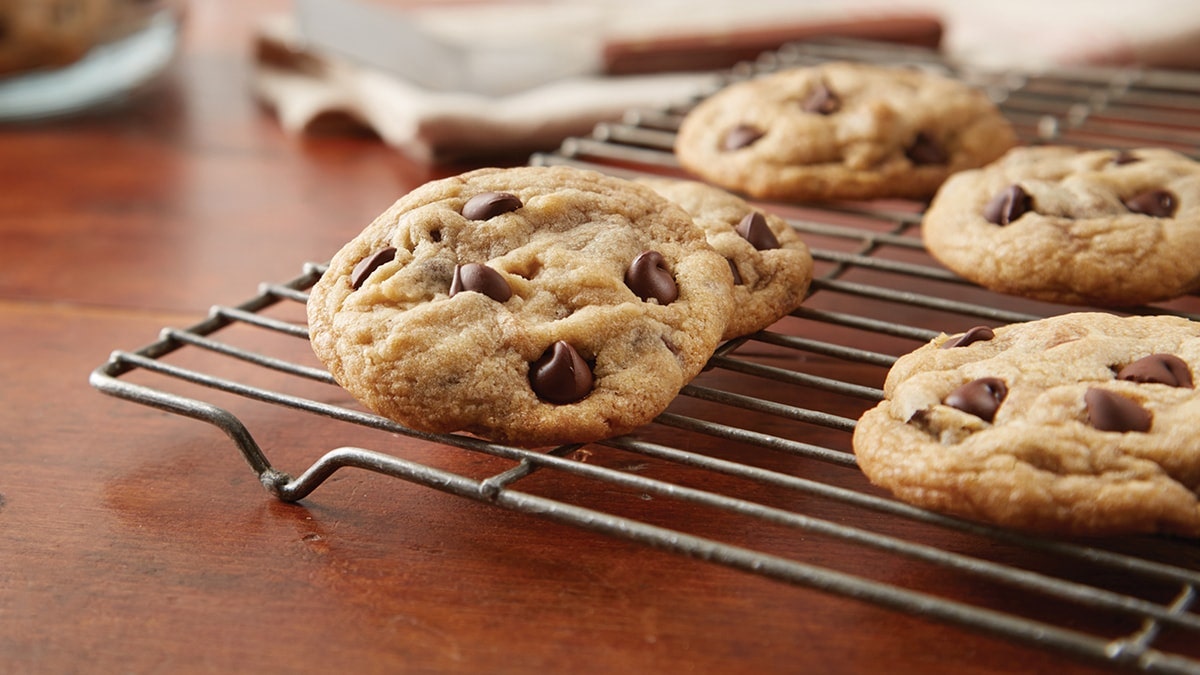CLOSE
Cancel
Crispy, soft, cakey or chewy: Everyone has their own idea of the perfect cookie. With so many differing definitions, how do you find that perfect balance of cookie-baking ingredients and techniques? Well, it turns out there’s actually a cookie science! Here are a few baking tips and tricks to help you attain cookie perfection.
Eggs offer moisture and water, which eventually evaporate in the baking process. Adding more egg whites to a recipe tends to result in taller cookies. Adding egg yolks often creates fudgier cookies.
If you are seeking a softer and taller cookie, try substituting brown sugar for white sugar. It melts and caramelizes faster than granulated sugar. Granulated sugar will give you a crisper, thinner cookie. Many like a combination of granulated and brown sugar — it’s just a matter of taste preference.
All-purpose flour tends to hold up better when you bake it in cookies. Cookies made with cake flour may be soft, but they are often too tender and fall apart when lifted off the baking sheet.
When you think cookies, you likely think of sweet ingredients, but salt is essential. It balances the flavor of caramelized sugars. We even love sprinkling a little extra flake salt on our cookies to awaken the tongue and complement the sweetness.
Some say that baking is more difficult than cooking because of the importance of measuring every ingredient properly. Measuring properly is critical, as the balance between each of the ingredients affects the final outcome.
Consistent size gives consistent baking. Size impacts the time needed to properly bake your cookies, and unless you have individual pans to bake each cookie, your cookies will bake differently if they are sized differently.
Caramelization happens at 356 degrees, so if you are aiming for a crisper cookie but the recipe says 350 degrees, adjust the heat slightly. Keep your eyes on the speed at which the cookie bakes. Each oven’s temperature varies slightly.
Yes, even how you scoop makes a difference! Avoid putting your cookie dough on a warm cookie sheet. The dough will start to melt too fast and spread, resulting in a flatter cookie.
Once you’ve removed your cookies from the oven, allow them to cool slightly on the cookie sheet before removing them to a wire rack. This cooling will allow the cookies to set a little so they do not fall apart or adjust shape when you pull them off the baking sheet.
If you find your cookies have come out a little overdone or dense, store the cooled cookies in an airtight container with a piece of fresh bread. The bread will offer a little extra moisture and can slightly adjust the texture overnight. Just be sure to throw out the now-stale bread before serving!

Congratulations, now you’re a cookie scientist! No degree required. Get ready to impress friends with your cookie knowledge and skills. But no matter what, always keep experimenting. It’s the only way to discover what the perfect cookie looks (and tastes) like for you! After all, there’s no wrong way to bake — or eat — a cookie. Try using what you’ve learned today in one of our many cookie recipes.